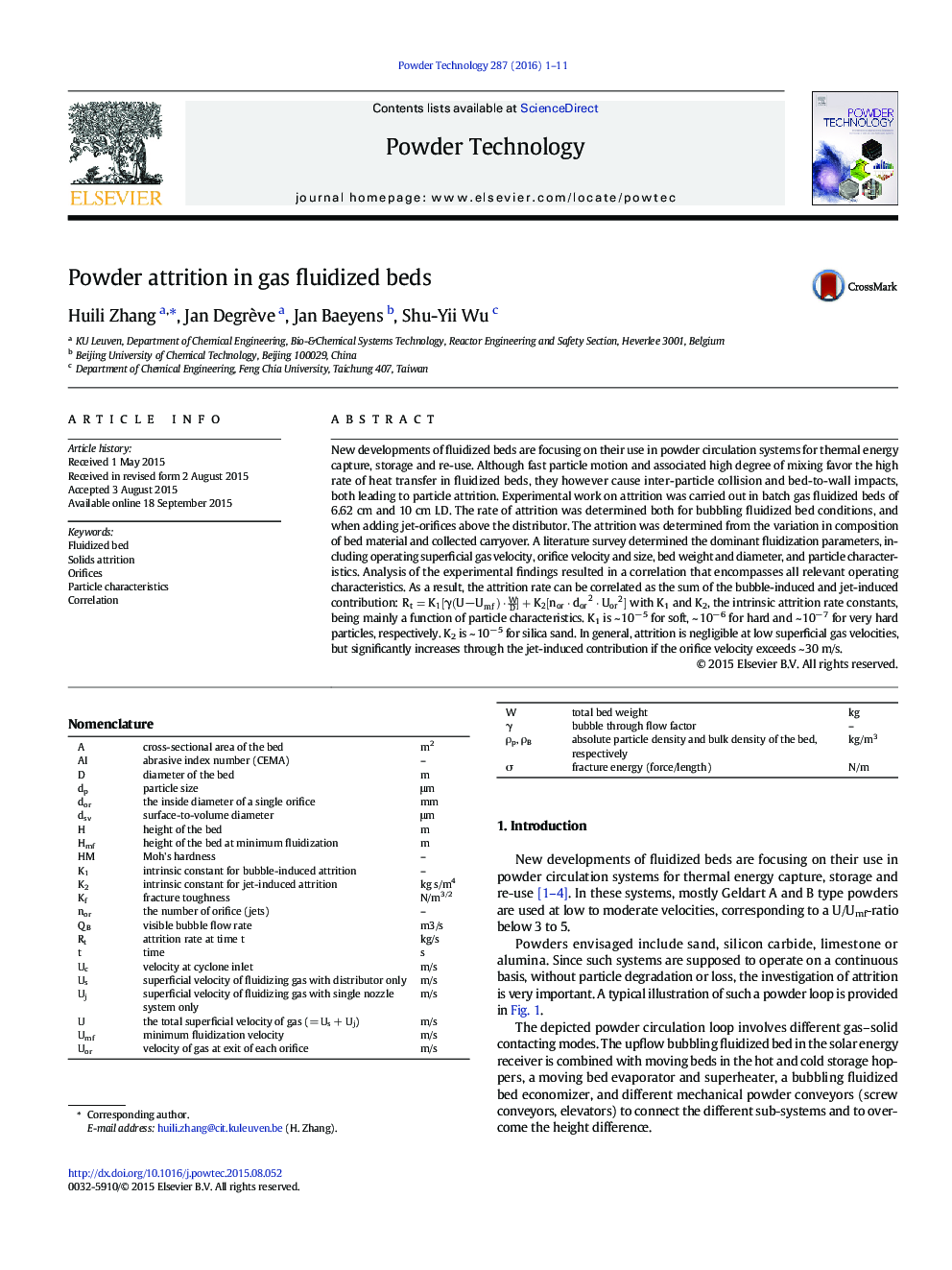| کد مقاله | کد نشریه | سال انتشار | مقاله انگلیسی | نسخه تمام متن |
|---|---|---|---|---|
| 235153 | 465630 | 2016 | 11 صفحه PDF | دانلود رایگان |
• Inter-particle collision and bed-to-wall impacts lead to particle attrition.
• Experimental work on attrition was carried out in batch in gas fluidized beds.
• Both bubbling fluidized bed and distributor orifices were examined.
• A correlation that encompasses all relevant operating characteristics
• Attrition is negligible at low Ugas, but increases when jets injection contributes.
New developments of fluidized beds are focusing on their use in powder circulation systems for thermal energy capture, storage and re-use. Although fast particle motion and associated high degree of mixing favor the high rate of heat transfer in fluidized beds, they however cause inter-particle collision and bed-to-wall impacts, both leading to particle attrition. Experimental work on attrition was carried out in batch gas fluidized beds of 6.62 cm and 10 cm I.D. The rate of attrition was determined both for bubbling fluidized bed conditions, and when adding jet-orifices above the distributor. The attrition was determined from the variation in composition of bed material and collected carryover. A literature survey determined the dominant fluidization parameters, including operating superficial gas velocity, orifice velocity and size, bed weight and diameter, and particle characteristics. Analysis of the experimental findings resulted in a correlation that encompasses all relevant operating characteristics. As a result, the attrition rate can be correlated as the sum of the bubble-induced and jet-induced contribution: Rt=K1γU−Umf⋅WD+K2nor⋅dor2⋅Uor2 with K1 and K2, the intrinsic attrition rate constants, being mainly a function of particle characteristics. K1 is ~ 10− 5 for soft, ~ 10− 6 for hard and ~ 10− 7 for very hard particles, respectively. K2 is ~ 10− 5 for silica sand. In general, attrition is negligible at low superficial gas velocities, but significantly increases through the jet-induced contribution if the orifice velocity exceeds ~ 30 m/s.
Figure optionsDownload as PowerPoint slide
Journal: Powder Technology - Volume 287, January 2016, Pages 1–11
